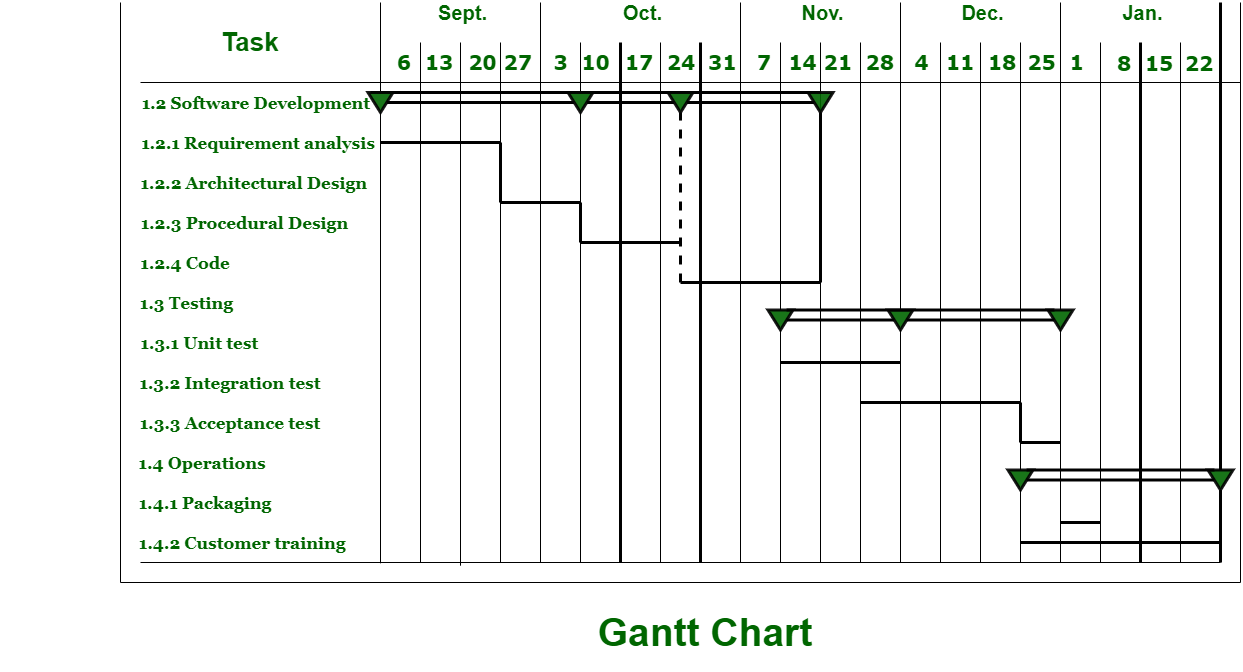
|
|
Workstreams are the small parts of a big project in project management. In each work stream specific tasks related to the project are completed and in the end, by this work stream our project gets completed. They help to break down big projects into smaller and more manageable tasks. To make a project successful it is equally important to manage these work streams so that everyone knows about their responsibility in the project. So in this article, we are going to learn about Gantt charts which help in managing work streams, making it easier to keep track of the project’s progress at each stage. Table of Content
Introduction to Gannt charts in Project ManagementGantt chart shows all the tasks in a project and the time when they need to be completed. It consists of horizontal bars, each representing a task and the length of the bar shows the time required to complete the task. It helps in organizing the tasks and makes it easy to spot potential problems, like overlapping tasks or one task taking too long time than required. So now we will see how these Gantt charts are used to plan the project work streams. Steps to build a Gantt chart in Project ManagementHere are the steps below to build a Gantt chart:
Example of Gantt chart in Project ManagementNow we will see one example of a Gantt chart for better understanding,  Gantt Chart Examples In above gantt chart we are planning to make a website . So first of all we will research and plan on the topic we need and it is the first task to do. Then we will perform frontend development , backend developement , testing and deploying in a sequence shown. So this is gantt chart , it helps to visualize the project and makes it easy to proceed. Example of workstream in Project ManagementAs shown in above example , this is basically one example of workstreams where big project is divided into smaller workstreams. there are five work streams as follows in above example
Workstream best practices for project managersProject managers can optimize their workstreams by implementing the following best practices:
By incorporating these best practices into their workstreams, project managers can enhance efficiency, collaboration, and ultimately, project success. Benefits of using gantt chartThe benefits of using gantt chart are following:
Gantt chart offers number of benefits that contribute to improved project planning, management and execution which leads to more successful project completion. Conclusion: Gantt chartIn summary, effective project management hinges on adept workstream management, essential for breaking down complex projects into manageable tasks. Workstreams, aided by tools like Gantt charts, facilitate clear task delineation, timeline tracking, and resource allocation. Implementing best practices such as goal setting, detailed planning, communication, and agile methodologies optimizes workstream efficiency. Gantt charts offer visual task representation, aiding decision-making and project planning. By adhering to these practices and leveraging tools effectively, project managers can enhance efficiency, collaboration, and ultimately, project success. FAQs: Gantt chartQ. What is gantt chart ?
Q. How to create a gantt chart ?
Q. What is work stream in project ?
|
Reffered: https://www.geeksforgeeks.org
| Project Management |
Type: | Geek |
Category: | Coding |
Sub Category: | Tutorial |
Uploaded by: | Admin |
Views: | 16 |